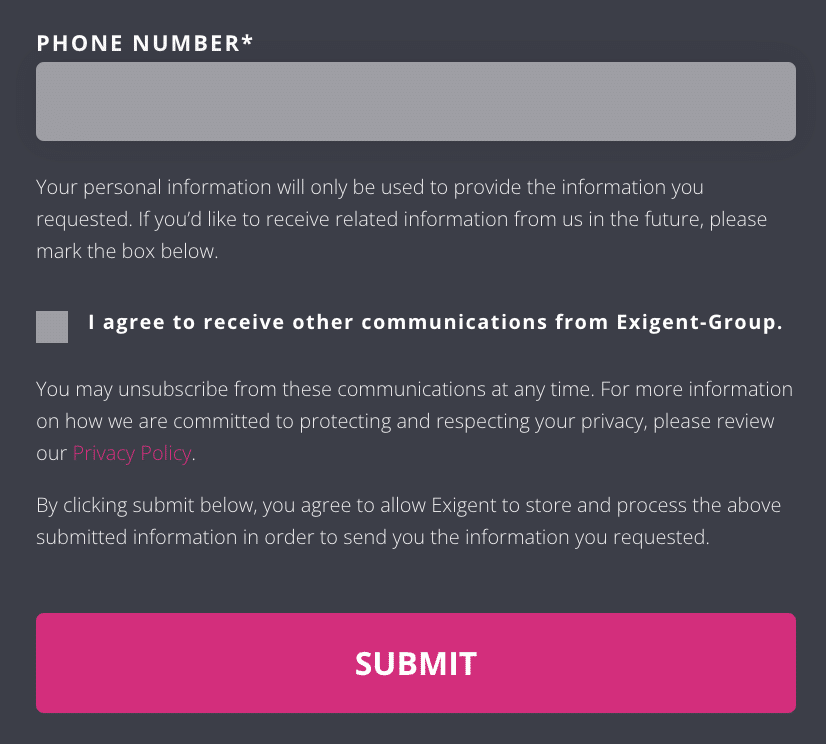The rise of ecommerce has made digital signatures a necessity. They have sped up the contract process and allowed for conveniently purchasing or downloading items. The clickwrap agreement is one of the easiest yet legally reliable methods for obtaining that crucial agreement from consumers or other businesses.
As businesses move online, both in B2C and B2B sectors, clickwrap grows to protect businesses during digital transactions.
This guide will help you decide whether clickwrap agreements are right for you and how to make them legally binding.
Key Takeaways:
- Clickwrap agreements are digital contracts where users click a button or check a box to accept specific terms and conditions.
- They are efficient, legally enforceable, and provide clear records of user consent, making them advantageous for businesses and users alike.
- To create a legally sound clickwrap agreement, businesses should use clear language, maintain transparency, ensure opt-in consent, and keep records of user acceptance.
What Is a Clickwrap Agreement?
A clickwrap agreement is a type of digital legal contract. It uses a click button or checkbox instead of a signature. Users express their consent by clicking, simplifying the agreement process. Legal departments implementing new legal technology are increasing their use of clickwrap agreements to support legal workflow automation.
Some other names for clickwrap agreements are clickthrough, click-accept, and click-to-sign agreements.
Here are some common examples of a clickwrap:
- Accepting terms and conditions
- Registering for online services
- Purchasing online products
- Downloading software or products
- Login pages

How Does Clickwrap Differ from Other Agreements?
Clickwrap is not the only legally binding way to close an online contract. Here are a few other ways commonly used.
Clickwrap vs. Browsewrap Agreements
Clickwrap asks the other party to click a box or button to agree manually. In contrast, browsewrap contracts have a note telling the user that if they continue to browse the website, they are expressing their consent.
Courts often favor clickwrap for its clear and explicit consent over browsewrap contracts, which may lack visible and clear terms. Clickwraps are much more explicit and conspicuous, making them much harder to challenge in court.

Clickwrap vs. Sign-in Wrap Agreements
Sign-in wrap agreements, like browsewrap agreements, use a party’s actions instead of a signature for consent. In this case, it’s signing into an account versus continuing browsing as with browsewrap agreements.
While sign-in wrap agreements require more conspicuous actions (signing into an account), it is still not quite as straightforward as clickwrap contracts, which is why they may not hold up in court as well as the previous.
Benefits of Clickwrap Agreements
Why would a business opt for a clickwrap agreement over signatures?
Clickwrap agreements are fast and secure while being legally binding.
Businesses use clickwrap agreements in processes like purchasing products or signing into an account where customers don’t want to spend too much time reading and signing lengthy contracts. This expediency improves conversion rates as customers are less likely to abandon the purchase or signature process.
While clickwrap agreements are popular in B2C businesses, they are growing in popularity among B2B businesses as more processes and agreements move online.
Clickwrap Agreement Benefits
Here are some benefits of using clickwrap agreements:
- Efficiency: They require minimal disruption to a customer’s process, like purchasing a product or signing in.
- Legality: They protect your business and track user consent in case you need a record for court disputes.
- Clarity: They present terms explicitly and visibly, which gives them greater weight in court cases and helps the other parties fully understand what they’re signing up for before agreeing.
What Are the Legal Requirements for Clickwrap?
Clickwrap agreements gain their legally binding status from The Electronic Signatures in Global and National Commerce Act (E-Sign Act), which became law on June 30, 2000. This act outlines what makes an e-signature legal, which clickwrap agreements must follow to comply.
According to the law, a legal clickwrap agreement needs to contain four primary elements:
Clear and Conspicuous
The terms and conditions must be presented clearly and conspicuously. Users should easily understand what they consent to before clicking the button.
Unambiguous Consent
Clickwrap agreements must have an explicit way of showing consent. This is what makes browsewrap agreements more difficult to prove in court. With clickwrap agreements, users must click a marked button or box to show their consent.
Visible Terms
All terms must be visible to users and shouldn’t be hidden within lengthy documents or buried multiple pages deep where users might easily miss them.
Retained Records
You must have a secure means of saving the clickwrap agreement. Additionally, the other parties should have access to those records to download and keep the contract themselves.
How to Create a Legally Enforceable Clickwrap Agreement
Clickwrap agreements require several design and legal elements to be both visually appealing and legally binding.
1. Ensure Contract Accessibility
The contract must be easily accessible and readable. You can either have the contract on the page or a link to another page where they can read it.
Users should also be able to easily save or print the contract for their records.
2. Clearly Mark the Consent Option
The value of clickwrap agreements lies in the clear proof of consent. The consent button or checkbox should explicitly state the action, “I agree to the terms and conditions,” to avoid disputes.
3. Provide Reasonable Notice
To ensure the clickwrap agreement holds up in court, you must provide reasonable notice. In other words, they must see what they’re agreeing to when entering into a contract.
This often means not allowing progress to the next page unless they agree to the contract, or making the user scroll through the entire contract before they can sign it.
4. Collect Agreement Proof
To prove there was an agreement, you must be able to show the clickwrap agreement and that it checked all the boxes of a legally binding agreement.
There are several ways you can show the clickwrap agreement in court, including:
- Contract data that records the clickwrap agreement and the user accepting the terms, including the time, version, and person who clicked the agreement.
- Screenshots of the agreement when someone signed it show it is clear and conspicuous.
- Sworn testimonies in the form of an affidavit or written statement that supports the clickwrap agreement’s legality.
Incorporate Clickwrap Agreements into Your Contract Automation
Clickwrap helps you automate the contract process to streamline your contracts without compromising your legal security.
Exigent is your partner for legal workflow. Our suite of tools and expert support can help you track, manage, and organize your legal contract workflows.
Learn more about our legal workflow and contract automation services.
Need a little more support in your legal transformation journey? Join the GC Forum
 What is the GC Forum?
What is the GC Forum?
The GC Forum is a peer-to-peer community exclusive to corporate legal on legal transformation best-practices.
Hear war stories, successes, and tales of radical leadership to achieving legal transformation from GCs around the globe.
Join your region to get insights and contribute yours during closed-door GC Forum virtual roundtable sessions, workshops, and quarterly in-person conferences and social events.
To become a member register below….
Upcoming Events
| GC Forum USA: 9 Nov, 11am EST |
|---|
 |
| Navigating the ESG Horizon: What’s Next for GCs |
| Guest Speaker: Christine Uri, Advisor to In-House Legal Team on ESG, Fr. Chief Legal Officer, Top 100 Leader in Sustainability |
| RSVP Here |
| GC Forum APAC: 30 Nov, 9am AEST |
|---|
 |
| Setting the Stage for AI in Your Legal Department: How to Prepare, Launch and Integrate the Use of AI into Your Workflows |
| Guest Speaker: Nina Stamell, GC of MyHealth.net.au |
| RSVP Here |
| GC Forum AUS / APAC: 15th Feb, 8am-9am AEST |
|---|
 |
| The T-Shaped Team Framework: Why the T-Shaped Lawyer vision offers a game-changing new direction for your department |
| Featured Speaker: Peter Connor, 20 Years General Counsel Experience, Author, Speaker, Coach, Founder and CEO of Alternatively Legal |
| RSVP Here |
About the Author:
Exigent delivers scale, expertise, and insights that generate bigger returns for CLM – Contract Lifecycle Management, Legal Spend Management, e-Billing, Due Diligence, Document Review, eDiscovery and Litigation Support, Commercial Services, Regulatory & Compliance, Outsourced Legal Administration, and Legal Tech Design.
Follow us on LinkedIn and Twitter to transform the way you do legal.
















